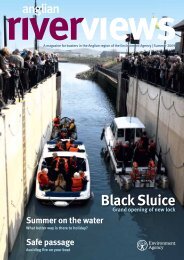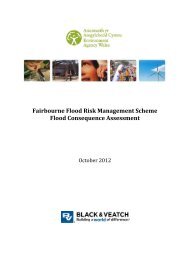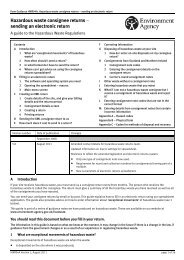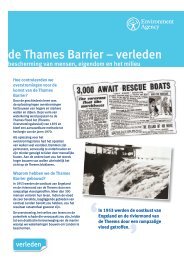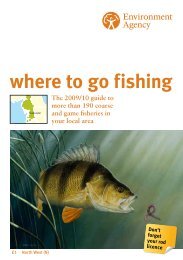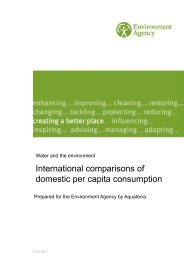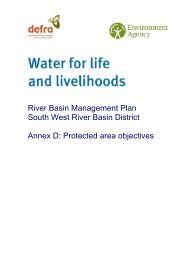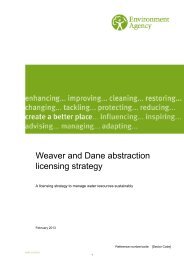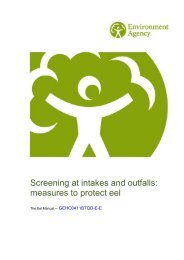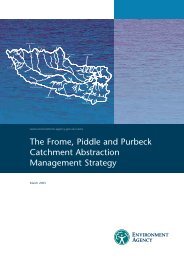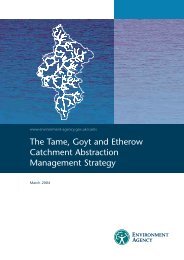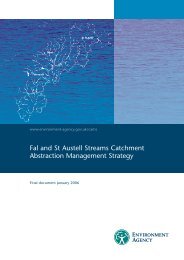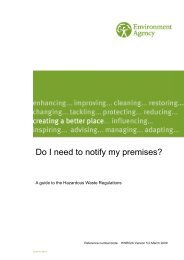Karenia mikimotoi
Karenia mikimotoi
Karenia mikimotoi
You also want an ePaper? Increase the reach of your titles
YUMPU automatically turns print PDFs into web optimized ePapers that Google loves.
estimated to be 0.1 to 0.5 that of a <strong>Karenia</strong> brevis cell (Bridgers et al., 2004). It was<br />
suggested by these workers that blooms of raphidophytes would have to be of<br />
correspondingly higher densities to have the same effect as that of a K. brevis bloom.<br />
Also, as discussed by Smayda (2006), there is a higher probability that blooms will<br />
occur in chemically modified habitats and at fish-farming sites.<br />
It is interesting to note that two of the fatty acids from Fibrocapsa reported by Fu et al.<br />
(2004) as having strong haemolytic activity are widely promoted as human dietary<br />
supplements. Eicosapentaenoic acid (EPA) is a component of ‘omega-3’-rich fish oils,<br />
and non-toxic microalgae such as Porphyridium cruentum have been investigated as a<br />
possible source of arachidonic acid for use in infant feeding formulations. This<br />
highlights the fact that the toxic effect of such compounds probably operates at a<br />
microsopic level where there may be microzones of very high concentrations around<br />
individual cells (see sect. 3.4.3).<br />
3.9 Heterosigma akashiwo<br />
This alga is cosmopolitan and is widely distributed in the Atlantic and Pacific oceans<br />
and is found in European waters from Norway in the north to Spain and Portugal in the<br />
south (Smayda, 2006). Its toxic properties have been reviewed by Landsberg, (2002)<br />
and Smayda (2006). To quote the latter: “Heterosigma akashiwo is probably the most<br />
versatile harmful algal species known: it is antagonistic to organisms ranging in size<br />
from bacteria to invertebrates to fish. Its multiple modes of antagonism range from<br />
nutritional inadequacy, to suppression of feeding and growth, and to toxicity causing<br />
mortality.” These antagonistic properties towards various organisms have been<br />
tabulated in detail by Landsberg (2002).<br />
The exact nature of the toxins and mechanisms of toxicity in H. akashiwo and other<br />
raphidophytes remains unclear. Some mechanisms of ichthyotoxicity, which may also<br />
be involved with allelopathy, that have been postulated are production of reactive<br />
oxygen species and the production of toxins that have yet to be fully characterized<br />
(Twiner et al., 2004; Smayda, 2006; Kempton et al., 2008).<br />
Khan et al. (1997) reported that they had isolated from H. akashiwo four toxic<br />
components which were, on the basis of the analytical methods used, tentatively<br />
identified as brevetoxins, neurotoxins that have been well characterized and are also<br />
produced by the dinoflagellate <strong>Karenia</strong> brevis (see sect. 5.).<br />
Uncharacterised extracellular compounds excreted by H. akashiwo were found to have<br />
an irreversible effect on respiratory activity in human and mammalian cells in vitro<br />
(Twiner et al., 2004). These compounds were also found to affect cytosolic calcium<br />
concentrations in cultured sf19 insect cells leading to apoptosis (cell death). The effect<br />
was related to the concentration of extracellular Ca 2+ . It was concluded that the<br />
extracellular compounds were inhibiting the plasma membrane Ca 2+ -ATPase<br />
transporter (Twiner et al., 2005). It was suggested that the compounds may play a role<br />
in the ichthyotoxicity and allelopathy of the alga.<br />
In laboratory studies Keppler et al. (2005) demonstrated sublethal effects (significantly<br />
increased oyster hepatopancreas lysosomal destabilization rates) of cells of H.<br />
akashiwo on the southeastern oyster, Crassostrea virginica.<br />
The most notable impact of H. akashiwo has been on aquaculture where it has caused<br />
massive kills of farmed fish at various locations round the world and has also affected<br />
shellfish (Landsberg, 2002; Smayda, 2006; Kempton et al., 2008).<br />
24 A Literature review of the potential health effects of marine microalgae and macroalgae



